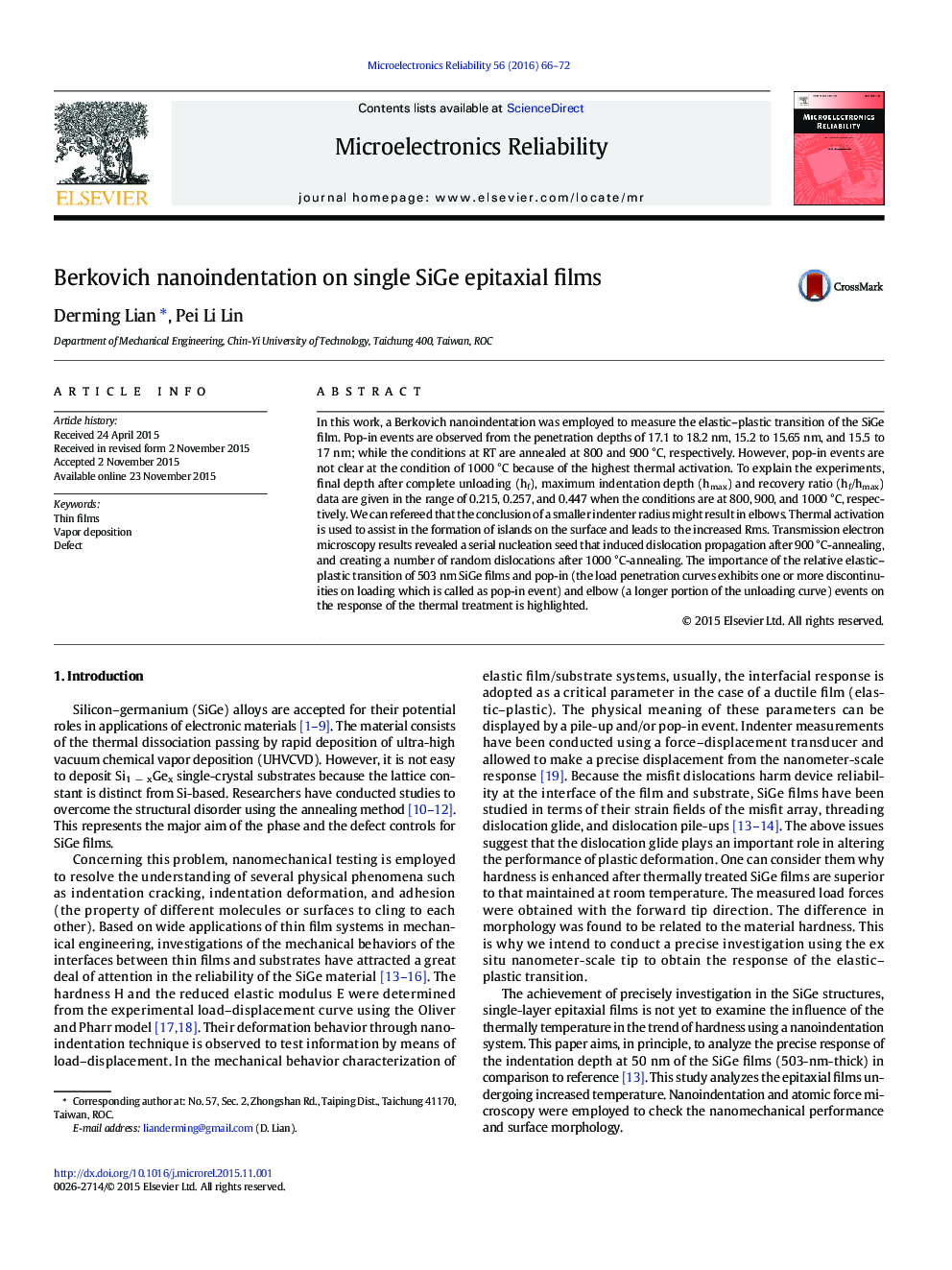| کد مقاله | کد نشریه | سال انتشار | مقاله انگلیسی | نسخه تمام متن |
|---|---|---|---|---|
| 548116 | 1450544 | 2016 | 7 صفحه PDF | دانلود رایگان |

• We evaluated the thermal reliability of epitaxial SiGe films.
• Thermal annealing tends to drive the Si and Ge bonds to break to form clusters and induce roughness on the surface.
• The dislocation glides and defect densities are thermally activated of SiGe films.
• Thermal treatment induce relaxed phenomenon as the restricted misfit dislocation to set free.
In this work, a Berkovich nanoindentation was employed to measure the elastic–plastic transition of the SiGe film. Pop-in events are observed from the penetration depths of 17.1 to 18.2 nm, 15.2 to 15.65 nm, and 15.5 to 17 nm; while the conditions at RT are annealed at 800 and 900 °C, respectively. However, pop-in events are not clear at the condition of 1000 °C because of the highest thermal activation. To explain the experiments, final depth after complete unloading (hf), maximum indentation depth (hmax) and recovery ratio (hf/hmax) data are given in the range of 0.215, 0.257, and 0.447 when the conditions are at 800, 900, and 1000 °C, respectively. We can refereed that the conclusion of a smaller indenter radius might result in elbows. Thermal activation is used to assist in the formation of islands on the surface and leads to the increased Rms. Transmission electron microscopy results revealed a serial nucleation seed that induced dislocation propagation after 900 °C-annealing, and creating a number of random dislocations after 1000 °C-annealing. The importance of the relative elastic–plastic transition of 503 nm SiGe films and pop-in (the load penetration curves exhibits one or more discontinuities on loading which is called as pop-in event) and elbow (a longer portion of the unloading curve) events on the response of the thermal treatment is highlighted.
Journal: Microelectronics Reliability - Volume 56, January 2016, Pages 66–72